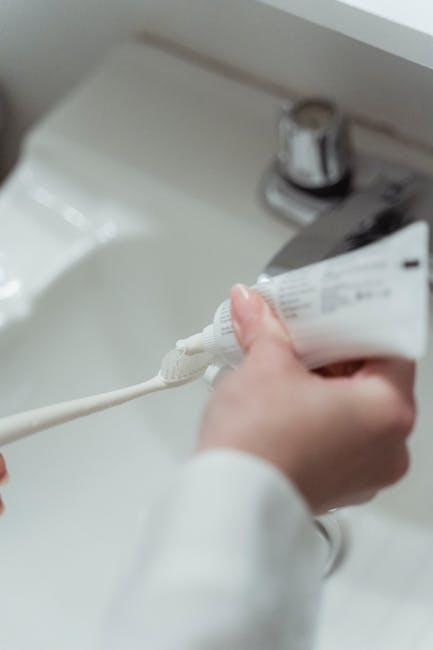Fluoride Ban Could Create Cavities for 1 of Every 3 U.S. Kids – U.S. News & World Report
The potential ban of fluoride in public water systems has sparked widespread concern among healthcare professionals and parents alike. According to a recent U.S. News & World Report analysis, removing fluoride could lead to cavities in one out of every three children across the United States. As fluoride has long been celebrated for its cavity-preventing properties, this looming policy change may profoundly impact children’s dental health nationwide.
Understanding Fluoride and Its Role in Oral Health
Fluoride is a naturally occurring mineral found in many water sources and dental products like toothpaste and mouth rinses. Over the past several decades, community water fluoridation has been recognized as a public health achievement for its ability to significantly reduce tooth decay and promote strong, healthy teeth among children and adults.
How Does Fluoride Work?
- Strengthening Tooth Enamel: Fluoride helps rebuild weakened tooth enamel, making it more resistant to acid attacks from bacteria in the mouth.
- Inhibiting Harmful Bacteria: It reduces the ability of cavity-causing bacteria to produce acid that erodes enamel.
- Remineralization: Fluoride enhances the natural repair process in early-stage cavities, potentially reversing damage before it becomes severe.
Why Is There a Push to Ban Fluoride?
Despite its proven benefits, some groups advocate for fluoride bans due to concerns about potential health risks, environmental impact, and personal choice autonomy. The main arguments against fluoride include:
- Possible links to health issues such as thyroid problems or developmental delays (though scientific consensus largely refutes major risks at recommended levels).
- Concerns about overexposure and fluorosis, particularly cosmetic enamel discoloration.
- Ethical debates around mass medication without individual consent.
While these points have stirred debate, the American Dental Association (ADA) and the Centers for Disease Control and Prevention (CDC) continue to endorse water fluoridation as safe and effective.
Impact of a Fluoride Ban on U.S. Children’s Dental Health
Studies estimate that eliminating fluoride from community water supplies could lead to a dramatic rise in cavities, especially among children. According to the U.S. News & World Report data, approximately 1 in 3 U.S. children could develop untreated tooth decay if fluoride is banned.
| Age Group | Current Cavity Rate (%) | Expected Increase Without Fluoride (%) | Estimated New Cavity Rate (%) |
|---|---|---|---|
| 2–5 years | 23% | 40% | 32.2% |
| 6–11 years | 40% | 33% | 53.2% |
| 12–19 years | 52% | 30% | 67.6% |
These rising cavity rates could have long-lasting effects, such as increased dental treatments, higher healthcare costs, and reduced quality of life for children suffering from oral pain and infections.
Benefits of Fluoride in Children’s Dental Care
Fluoride plays a key role in maintaining optimal oral health for kids by:
- Reducing Tooth Decay by up to 70% in children and adults.
- Decreasing the prevalence of cavities in early childhood—a critical period for lifelong dental health.
- Lowering the need for costly dental procedures, including fillings, root canals, and extractions.
- Supporting healthy dental development in children.
Practical Tips for Maintaining Children’s Oral Health Without Fluoride
If a fluoride ban goes into effect, parents and caregivers will need to adapt their children’s dental care routines carefully. Here are effective alternatives and practices to help prevent cavities:
- Practice Good Oral Hygiene: Brush teeth twice daily with a fluoride-free toothpaste or a brushing aid recommended by your dentist.
- Limit Sugary Foods and Drinks: Sugar fuels the bacteria that cause cavities; controlling intake is essential.
- Regular Dental Checkups: Visit the dentist often for professional cleanings and early cavity detection.
- Use Dental Sealants: These protective coatings shield back teeth from decay and can be applied by dentists.
- Maintain a Balanced Diet: Foods rich in vitamins A, C, and D, calcium, and phosphorus support strong teeth.
- Encourage Water Consumption: Drinking water (even if unfluoridated) helps rinse away food debris and bacteria.
Case Study: Communities with and without Fluoride
Long-term studies comparing regions with fluoridated water to those without reveal striking differences in cavity rates among children:
| Community | Fluoridation Status | Child Cavity Rate (%) | Average Dental Visits per Year |
|---|---|---|---|
| City A | Fluoridated | 25% | 1.5 |
| City B | Non-fluoridated | 45% | 2.5 |
The data underscores that children living in non-fluoridated areas are nearly twice as likely to develop cavities and require more frequent dental treatments.
Conclusion: The Importance of Fluoride in Protecting U.S. Kids’ Dental Health
The proposed fluoride ban raises important questions about public health policy and children’s well-being. Fluoride remains one of the most effective and affordable tools to combat tooth decay, particularly benefiting vulnerable and underserved populations.
While opposition voices highlight concerns and alternatives, the scientific evidence consistently supports fluoride’s safety and efficacy in preventing cavities. If fluoride is removed from water systems, dental decay rates could spike alarmingly — putting 1 in every 3 American children at risk.
Parents, healthcare providers, and policymakers must work together to ensure that children retain access to reliable cavity prevention methods. Until more alternatives are equally proven and accessible, fluoride continues to be a cornerstone of pediatric oral health.
Want to learn more about protecting your child’s smile? Visit the CDC’s Community Water Fluoridation resource for comprehensive information and resources.


